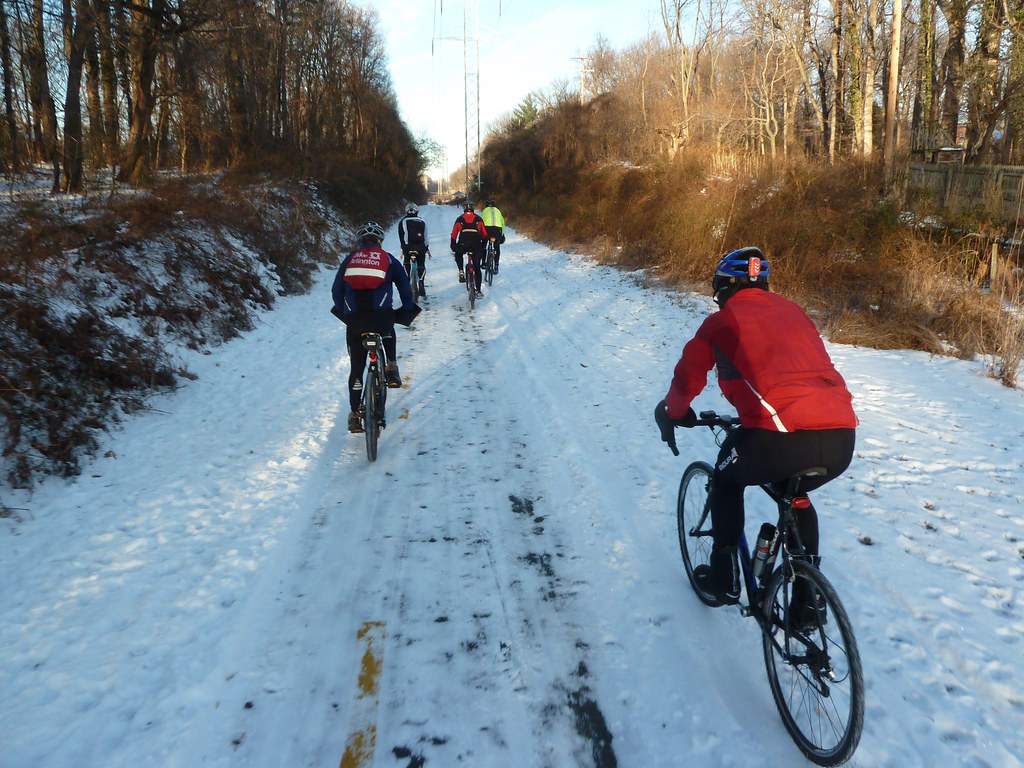Studded tires come in many different sizes and shapes. I’m not so much going to talk about tire sizes, because you need to get the tires that fit your bike, but I will talk about the different shapes because they define the purpose of the tire.
1) Ice tires: These are relatively narrow and have relatively little tread, but quite a few studs. They are designed to roll pretty quickly on pavement and work well on ice, but do not have enough tread to really deal with snow… either soft packed or fluffy.
Kenda Klondike: http://www.kendatire.com/en/bicycle/studded-tires/klondike-skinny-%28cross%29/ These have some tread, but not enough for deeper snow.
Suomi purchased Nokian’s bike tire division a while back. The W106 is their ice tire. They also make the Ice Speed, which is their commuter tire. These are arguably the best tires of this kind available.
2) Snow Tires: These are often a little wider (35-45mm wide), have lots of studs and also a lot of tread lugs for dealing with loose snow. These work GREAT in bad conditions, but are heavier and don’t roll as fast on pavement.
Suomi purchased Nokian’s bike tire division a year or two back. The W240 is their snow tire. These are arguably the best available and are priced accordingly. http://www.suomityres.com/eng/tyres/?code=T201281&type=winter#specs_winter
45Nrth Gravdal is their snow/ice tire. Looks awesome. I haven’t used it, but their reputation is good. These are often difficult to get ahold of. http://45nrth.com/products/tires/gravdal
Schwalbe Marathon Winter tires are somewhere between Snow and Ice tires. They’re arguably the best made and most durable studded tires ever. http://www.schwalbetires.com/node/1788
3) Mountain bike tires: These are fat. They’re 2-4” wide at least and they have plenty of tread as well plenty of studs. Like the snow tires, they’re great in loose snow, hard pack and ice, but they’re also GREAT on rutted ice. They’re also good for going mountain biking, if there are icy trails.
Suomi purchased Nokian’s bike tire division a few years ago. The Gazza Extreme 294 is as good as it gets in this type of tire. http://www.suomityres.com/eng/tyres/?code=T201281&type=winter#specs_winter
45Nrth Dillinger 5 fat tire: http://45nrth.com/products/tires/dillinger-5 This is it if you’ve got a fat bike. I used one last year and it was flawless. It weighs a ton.
45Nrth Nicotine is the 29er studded tire. It is 2.35” wide and awesome. http://45nrth.com/products/tires/nicotine
FAQ:
Can I install my own studs? Yes and no. Yes you can. There is a tool and you can buy studs. Some folks have made studded tires out of wood screws. They don’t last.
Which is best for me? I always choose the Snow or MTB tires. They work well in slush, loose snow, ice and hardback. I don’t care that they’re slower on pavement than the pure ice tires. If you never ride in loose snow or bumpy ice, then the ice tires will work well for you. In the DC suburbs, the ice never stays smooth for long. Go with something that can handle snow, ice and bumps.

